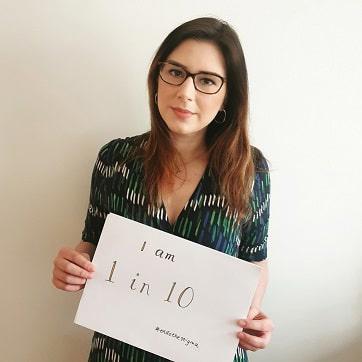I had been admitted to hospital on three separate occasions, requiring IV morphine to control mysterious bouts of lower abdominal pain, before I was finally diagnosed with endometriosis.
In the years before that diagnosis, I had been seen by gynaecology and had several pelvic ultrasounds, none of which revealed anything untoward.
Following the emergency admissions, I was discharged home with no answers each time, once the pain was under control and it had become clear this wasn’t an ectopic pregnancy or my appendix rupturing.
I knew that ultrasound wasn't a good modality for diagnosing endometriosis, so it hadn’t been ruled out entirely, but I still worried that I was causing a fuss about nothing.
One of my friends gently suggested it could be stress causing the pain, and I agreed that it could, although privately hoped there was a different answer to the agony that had required such a large amount of opiates to control during the previous admission.
I will admit that I shed a tear of relief when a particularly thorough gynaecology registrar eventually found several endometriomas on an outpatient scan. Finally having an answer was welcome news.
 HALLETT: 'Endometriosis still takes eight years on average to diagnose'
HALLETT: 'Endometriosis still takes eight years on average to diagnose'
The MRI scan that followed and showed the extent of the disease – involving my bowel (large and small), pelvic ligaments and vessels, bladder, ureters and ovaries – was less welcome. I was additionally diagnosed with adenomyosis, a condition I had no recollection of learning about in medical school, where the endometrium infiltrates the muscular wall of the uterus.
March is Endometriosis Awareness Month. One in 10 people assigned female at birth have endometriosis – that's 1.5 million people in the UK – and yet it is still so poorly understood and recognised, including among the medical profession.
Endometriosis is the second-most common gynaecological condition. It still takes eight years on average to diagnose. It took me 10 years to get a definitive diagnosis, despite suspecting I had endometriosis from the first year of medical school, when reading about pelvic anatomy and localising my pain (hello, Pouch of Douglas) for the first time.
There are probably a few reasons as to why diagnosis takes so long. There is still a societal acceptance that having excruciatingly painful periods are just part of having a uterus sometimes, and that it is normal for a few days a month to be in so much pain it interferes with your daily activities. This is plainly wrong, but the myth is pervasive.
There is also still a squeamishness when talking about periods. I don't think twice about mentioning to colleagues that I'm not feeling well because of an impending migraine but feel strangely reticent about telling them that the reason I'm struggling to stand all the way through the ward round that day is because of an endometriosis flare.
Prior to diagnosis, I was so embarrassed about having to go home from work owing to ‘period pain’, I would lie and attribute it to another cause (such as the less socially awkward D&V).
Evidence from Endometriosis UK (an amazing charity) showed that 47% of women would be concerned about telling their employer that they needed time off owing to their endometriosis.
Likewise, I talked about having endometriosis on Twitter last summer and was told by another doctor that, as someone in a leadership position, I shouldn't mention such things in public. I suspect they wouldn't have said that had I been talking about a broken ankle.
I'm also aware that as a white, cisgender, non-disabled woman, my experiences so far will have been much smoother than for many others. It is well established that black women's pain is downplayed and poorly managed by health professionals.
For transgender men, there are systemic barriers that can affect access to care for menstrual disorders, as well as the psychological ramifications. It is important these aspects are recognised and improved on as a priority as awareness grows.
These health inequalities affect the access, experiences and outcomes for people, a fact we have become acutely aware of during the pandemic and the BMA is pushing for an end to structural discrimination that will continue to cause health inequalities.
Happily, I've not had an acute admission for pain this year, owing in part to finding a combination of prescription medications and heat packs that allow me to stay at home rather than bothering emergency care, although they still interrupt my ability to go to work, and I still feel awkward telling the team.
On bad days, I can barely mobilise owing to pain in my pelvis, hip and back, not to mention the pain caused by bladder involvement. My surgery has been (understandably!) delayed repeatedly but I'm hopeful it could happen before Endometriosis Awareness Month 2022 rolls around.
It really isn't just a bad period. It's a multi-organ inflammatory disease that causes huge amounts of pain and distress to countless individuals.
In a recent report by the All Party Parliamentary Group on Endometriosis, 90% of sufferers reported that they would have liked access to psychological support, but were not offered this.
Endometriosis UK are campaigning to #EndotheStigma throughout March – you can follow them on all main social media platforms, and find out about their incredible work – eg, encouraging employers to sign up to their Endometriosis Friendly Employer Scheme.
The NHS employs many thousands of women; it would be great to see more trusts and health boards on the list of employers on their website. Increased awareness must come with cultural change, so that those affected can be diagnosed and treated much quicker in years to come.
Sarah Hallett is BMA junior doctors committee chair

